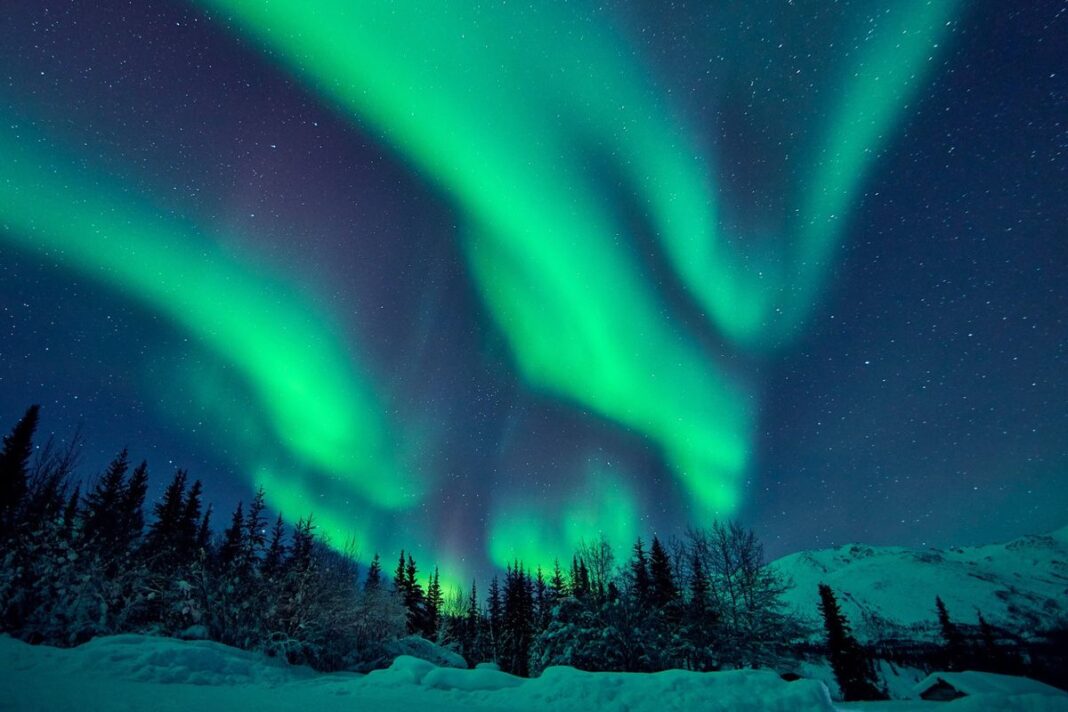People travel from all over the world to see the , also called Aurora Borealis or the Northern Lights. To those wondering how they happen, they occur when charged particles from the Sun, mainly electrons and protons, collide with the Earth’s atmosphere. This causes gasses in the atmosphere to emit light, which is mainly observed near the Earth’s polar regions.
In early November of this year, people saw the in places they don’t usually appear, like Italy and Texas. This happened because of something called a solar coronal mass ejection, which affects our Earth’s magnetic field and atmosphere. One of the largest magnetic storms in history As impressive as it was, a similar but more dramatic event happened in February 1872.
During that solar storm, also called the Chapman-Silverman storm, the northern lights were seen all around the world, even close to the equator in places like Bombay and Khartoum. This got a group of scientists wondering if these big solar storms or aurora light phenomena are happening more often than previously thought. They found that, indeed, it is.
The scientists studied the 1872 solar storm and found that the storm messed up telegraph communication a lot back then. In today’s world, with all our technology, a similar storm could cause problems with power grids and satellite communication. “The longer the power supply could be cut off, the more society, especially those living in urban areas, will struggle to cope,” Hisashi Hayakawa, the lead author of the study, .
The worst-case scenario is that these storms could destroy the power grid, communication systems, airplanes, and satellites. “Could we maintain our life without such infrastructure?” asked Hayakawa. “Well, let us just say that it would be extremely challenging.
” To learn more about how the Chapman-Silverman storm affected the Earth, scientists searched through old records in libraries and observatories worldwide. They found over 700 records that showed the sky lit up with beautiful auroras, not just in the polar regions but also closer to the equator, down to about 20 degrees in both the northern and southern hemispheres. “Our findings confirm the Chapman-Silverman storm in February 1872 as one of the most extreme geomagnetic storms in recent history.
Its size rivaled those of the Carrington storm in September 1859 and the NY Railroad storm in May 1921,” Hayakawa said. “This means that we now know that the world has seen at least three geomagnetic superstorms in the last two centuries. Space weather events that could cause such a major impact represent a risk that cannot be discounted,” added Hayakawa.
Hayakawa highlighted the rarity of extremely powerful solar storms, which fortunately are infrequent, and we haven’t experienced one in recent times. However, there is a significant concern because, in just six decades, there have been three such superstorms. This indicates that even though they are rare, they do happen, posing a potential threat to modern society.
The study emphasizes the importance of documenting both the solar origins and terrestrial impacts of these events, particularly the threat posed to electrical power grids. The study was published on December 1 in The . .
From: interestingengineering
URL: https://interestingengineering.com/science/more-aurora-lights-not-good



